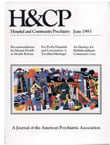Medication Refusal and Judicial Activism: A Reexamination of the Effects of the Rivers Decision
Abstract
Objective: In 1986 New York State courts in Rivers v. Katz mandated judicial review of cases in which involuntarily hospitalized psychiatric patients formally refuse medications; previously only a clinical administrative review was required. In an earlier study the authors found that formal refusals of medications declined significantly in the year after the Rivers decision and that length of time between refusal and its resolution increased. To determine whether these effects were maintained over time, data for the second year after the Rivers decision were examined. Methods: Chi square analysis and analysis of variance were used to compare data from both a private and a state-operated hospital for the year before the Rivers decision with data from the first and second years after. Results: The significant declines in the number of patients formally refusing medications were maintained in the second year after Rivers at both hospitals, as were the significant increases in the length of time to resolution. In the second year, judges continued to uphold the treating psychiatrists' recommendations. The decline in the refusal rates was not found to be part of a broader trend that had been manifest before the Rivers decision. Conclusions: The sharp decline in refusals resulted in fewer patients having their medications reviewed by others not directly involved in their care. Increased time to resolution has diminished quality of care and has resulted in increased patient decompensation and staff injuries.
Access content
To read the fulltext, please use one of the options below to sign in or purchase access.- Personal login
- Institutional Login
- Sign in via OpenAthens
- Register for access
-
Please login/register if you wish to pair your device and check access availability.
Not a subscriber?
PsychiatryOnline subscription options offer access to the DSM-5 library, books, journals, CME, and patient resources. This all-in-one virtual library provides psychiatrists and mental health professionals with key resources for diagnosis, treatment, research, and professional development.
Need more help? PsychiatryOnline Customer Service may be reached by emailing [email protected] or by calling 800-368-5777 (in the U.S.) or 703-907-7322 (outside the U.S.).



